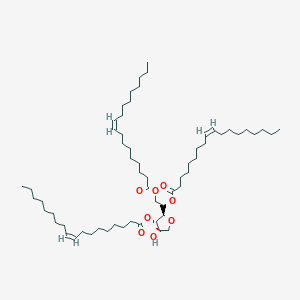Details of the Drug Inactive Ingredient (DIG)
| Full List of Biological Targets of DIG (DBTs) Regulated by This DIG | ||||||
|---|---|---|---|---|---|---|
| Transferase (TFase) | ||||||
| DBT Name: Protein kinase C theta (PKC-Q) | Click to Show/Hide | |||||
| Detailed Information |
DBT Info
 click to show the detail info of this DBT click to show the detail info of this DBT
|
|||||
| Experiment for Assessing the Biological Activity of the Studied DIG on This DBT | ||||||
| Biological Activity | EC50 = 8670 nM (estimated based on the structural similarity with CHEMBL590047 ) | [1] | ||||
| Structural Similarity | Tanimoto coefficient = 0.901408451 | |||||
| Tested Species | Homo sapiens (Human) | |||||
| UniProt ID | KPCT_HUMAN | |||||
| References | |||||
|---|---|---|---|---|---|
| 1 | Binding of curcumin and its long chain derivatives to the activator binding domain of novel protein kinase C. Bioorg Med Chem. 2010 Feb 15; 18(4):1591-8. | ||||
If you find any error in data or bug in web service, please kindly report it to Dr. Zhang and Dr. Mou.

